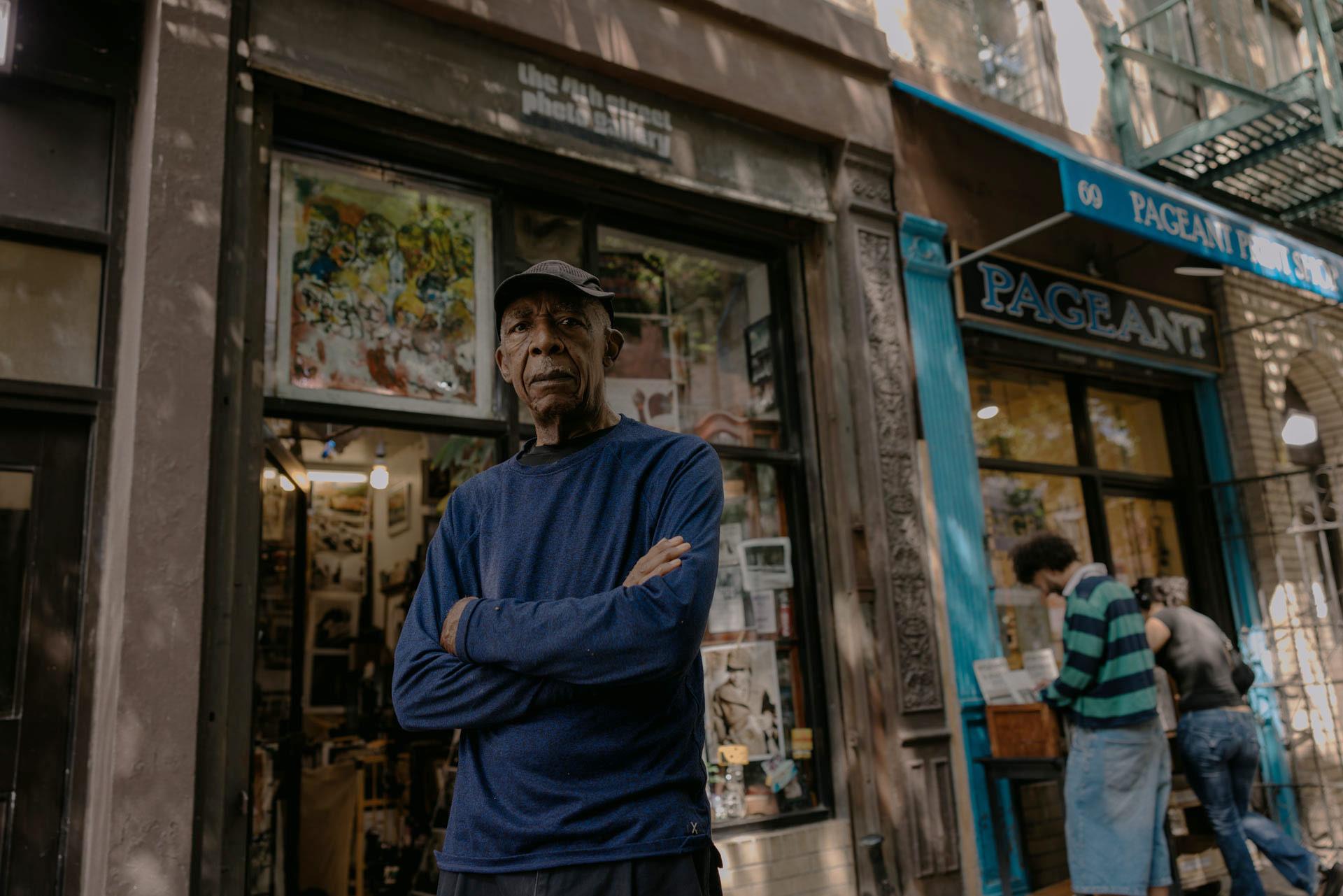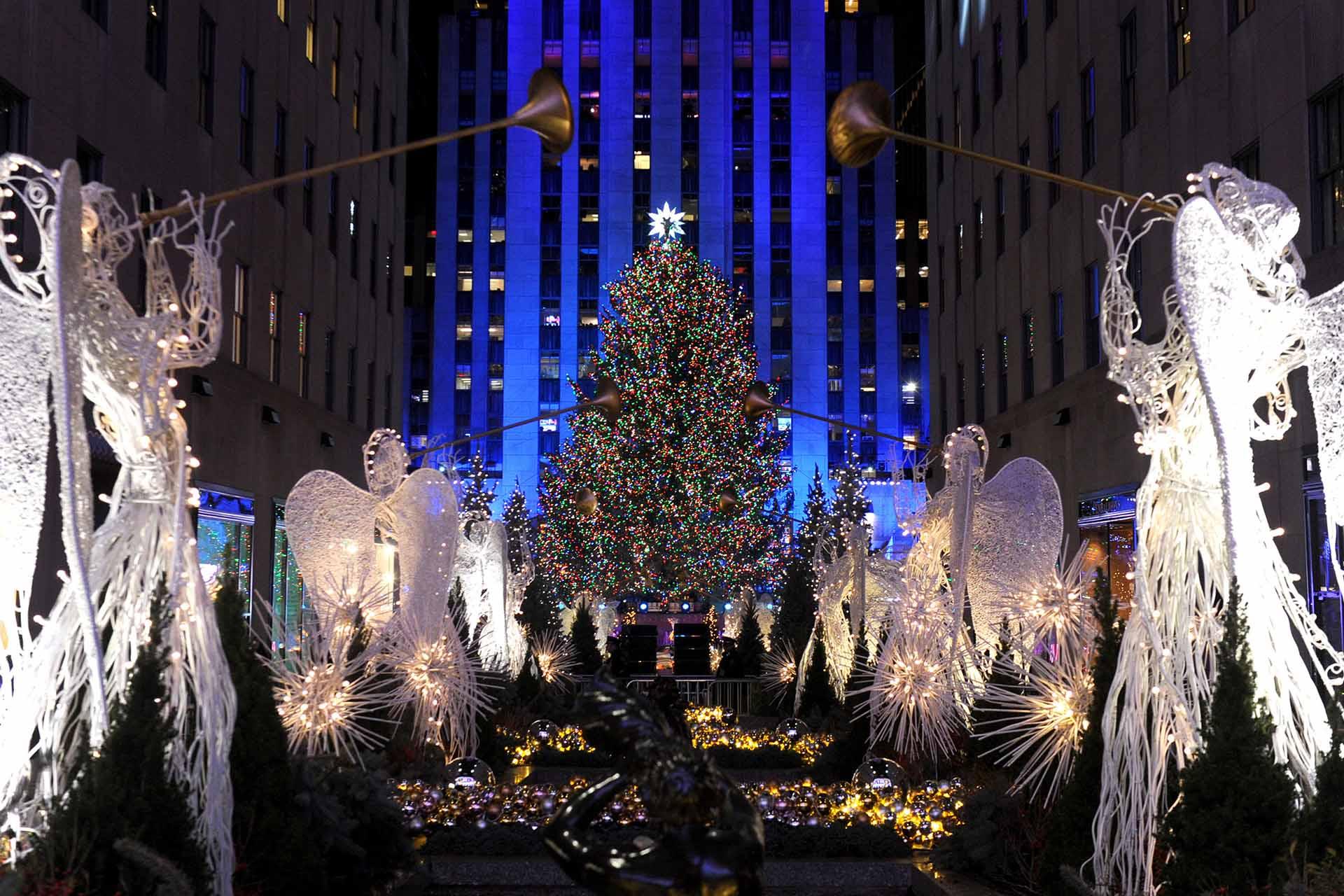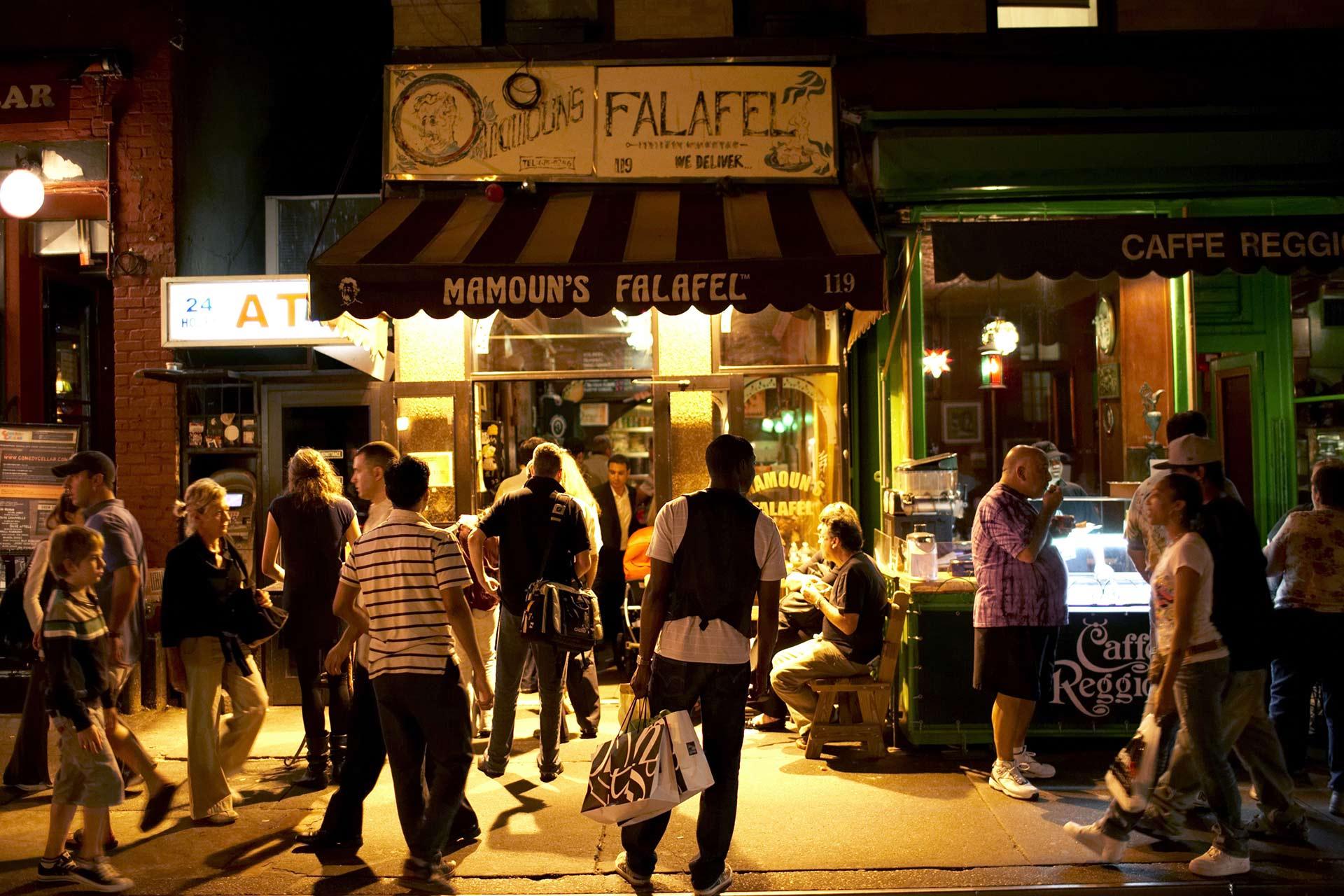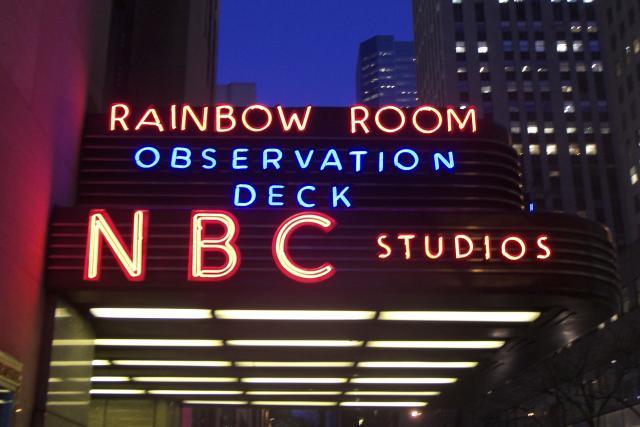In New York City, just a few subway stops can transport you to different worlds—from the electric pulse of Midtown Manhattan to quieter corners of the boroughs where cultures converge. Our Founded By NYC film series, “From Times Square to the World,” explores how the City has shaped and been shaped by the people and stories that make New York “New York”—and how easy all of them are to access right from Times Square. Along the way, we celebrate the vibrant past and ever-evolving present that make New York a city that’s always making history.
The pulse of the City has always been set by its cultural revolutions. From the creative brilliance of the Harlem Renaissance and the unapologetic pride of the LGBTQ+ rights movement to the raw visual language of street art and the joyful defiance of roller disco, each wave of cultural expression has left its mark on the City—and on the world. With the help of local experts, each stop on this route offers a window into the scenes and subcultures that transformed New York into a global epicenter of creativity, resistance and reinvention.

Michael Venturiello, Christopher Street Tours
Explore the West Village with Christopher Street Tours
Start your morning wandering the charming blocks of the West Village with Christopher Street Tours. Led by guides like founder Michael Venturiello, a passionate historian and storyteller, this tour illuminates the fight for LGBTQ+ rights in the streets where it happened.

Christopher Street Liberation Day, 1970. Photo: Diana Davies. Courtesy, New York Public Library
Venturiello brings to life stories of courage, community and change—you’ll visit notable sites like the former Oscar Wilde Memorial Bookshop, once a hub for queer organizing, and Gay Street, reclaimed by New Yorkers and briefly renamed Acceptance Street during World Pride. At the Stonewall Inn, learn how the 1969 uprising became a turning point that sparked a global revolution.
Along the way, admire the stately brownstones, independent bookstores and beloved bars like Cubbyhole, where community continues to thrive. It’s a powerful walk through the past and present of queer resilience and pride.
For your next stop, take the uptown 1 train from Christopher St–Stonewall station and get off at 125th Street to find yourself in Harlem, the Black cultural capital of America.

James Baldwin plaque, Harlem Walk of Fame
Experience Harlem’s Heartbeat with Inside Out Tours
If downtown helped launch one revolution, uptown cultivated another. Spanning the 1920s and ’30s, the Harlem Renaissance proved that in New York City, the arts aren’t just for expression—they’re a force for equity and change. Since that time, Harlem has emerged as the cultural capital of Black America, an intellectual and artistic hub that helped pave the way for the Black civil rights movement of the 1950s and ’60s.

Stacey Toussaint, Inside Out Tours
Meet a knowledgable guide from Inside Out Tours. Founder Stacey Toussaint is a cultural educator with a mission to amplify Black history in New York City. This walking tour is a rhythmic journey through Harlem’s storied streets—from its jazz-soaked past to its vibrant present.
As you make your way through the neighborhood, you’ll stop at key landmarks that bring Harlem’s legacy to life. Explore the Schomburg Center for Research in Black Culture—celebrating its 100th anniversary—a treasure trove housing works by James Baldwin and Maya Angelou, alongside portraits by Harlem Renaissance photographer James Van Der Zee.

Duke Ellington, Ella Fitzgerald and Louis Armstrong. Courtesy, Apollo Theater Foundation, Inc.
Visit the Apollo Theater, where legends like James Brown and Ella Fitzgerald performed. Jazz and blues—rooted in African American traditions—evolved into dominant cultural forces. African American music is the basis of so much of American music, and the music that was produced in that era influenced not just the entire country, but the entire world. Throughout the tour, Toussaint weaves in stories of local activism, shining a light on community-led efforts for racial justice and housing rights that continue to shape Harlem today.
For the next stop, take the 2 or 3 train downtown from 125th Street to 14th Street, then transfer to the L train and ride it to Morgan Avenue in Bushwick, Brooklyn.

Graffiti artist Caty Wooley
Discover Bushwick’s Bold Street Art with Like a Local Tours
In the afternoon, venture to Bushwick—a global hub for street art and creative expression. Like a Local Tours offers an insider’s look at some of the neighborhood’s most stunning murals and lesser-known artworks tucked away in unexpected spots. With guides like Christine Fiala, wander through vibrant alleyways and alongside industrial walls as she reveals the stories behind the art and the artists who created them.
Bushwick’s graffiti scene is part of a broader New York City influence that dates back to the 1970s and ’80s, when street art emerged as a voice for the voiceless. Artists like Keith Haring and Jean-Michel Basquiat turned public spaces into galleries, challenging traditional ideas of where art belongs and who it is for. They opened the door for future generations to use the city itself as a canvas for self-expression.
The echoes of those pioneers can still be felt in Bushwick today—from politically charged pieces to colorful abstractions, the constantly changing works stand a testament to the power of art as both protest and celebration.
Just a short stroll away, Xanadu awaits—an easy walk that lets you soak in the neighborhood’s vibe along the way.

Release Your Inner Child at Xanadu Roller Arts, a Throwback in Williamsburg
Finish your day at Xanadu Roller Arts, the only year-round indoor roller rink in the five boroughs. Xanadu fills a void in the City’s social landscape—it’s a vibrant space where friends, families and couples come to connect, celebrate and roll to the timeless beat of roller disco. Whether you’re skating, dancing, people-watching or soaking in the lively atmosphere, you’re invited to fully engage with the community that makes Xanadu truly special.
Xanadu revives roller disco’s golden age of 1970s and ’80s, when iconic venues like Empire Roller Disco in Crown Heights were in their prime. Empire was a cultural institution where roller disco was born, creating a space that was radically inclusive, expressive and alive. Its history echoes through every corner of Xanadu and on its walls.

Tanya Dean, Skaterobics at Xanadu Roller Arts
You’ll see it the moment you step inside: a striking 1980 photograph by Patrick Pagnano, taken at Empire, greets you. The image pulses with the raw energy and joy that defined an era—an energy that feels just as alive at Xanadu today. DJ Big Bob, one of Xanadu’s regular DJs and a former resident DJ at Empire, continues to spin today, keeping the legacy alive. That same spirit pulses through the work of skaters like Tanya Dean, a roller disco veteran and founder of Skaterobics, who brings people together—first-timers, seasoned pros and everyone in between—for community-centered, joy-filled classes.
Whether you’re raising a glass to the day’s journey or dreaming about your next skating session, Xanadu is a celebration of motion, memory and belonging—a place where the City’s story rolls forward, one spin at a time.
For more itineraries and to see the rest of the series, visit our From Times Square to the World hub.






